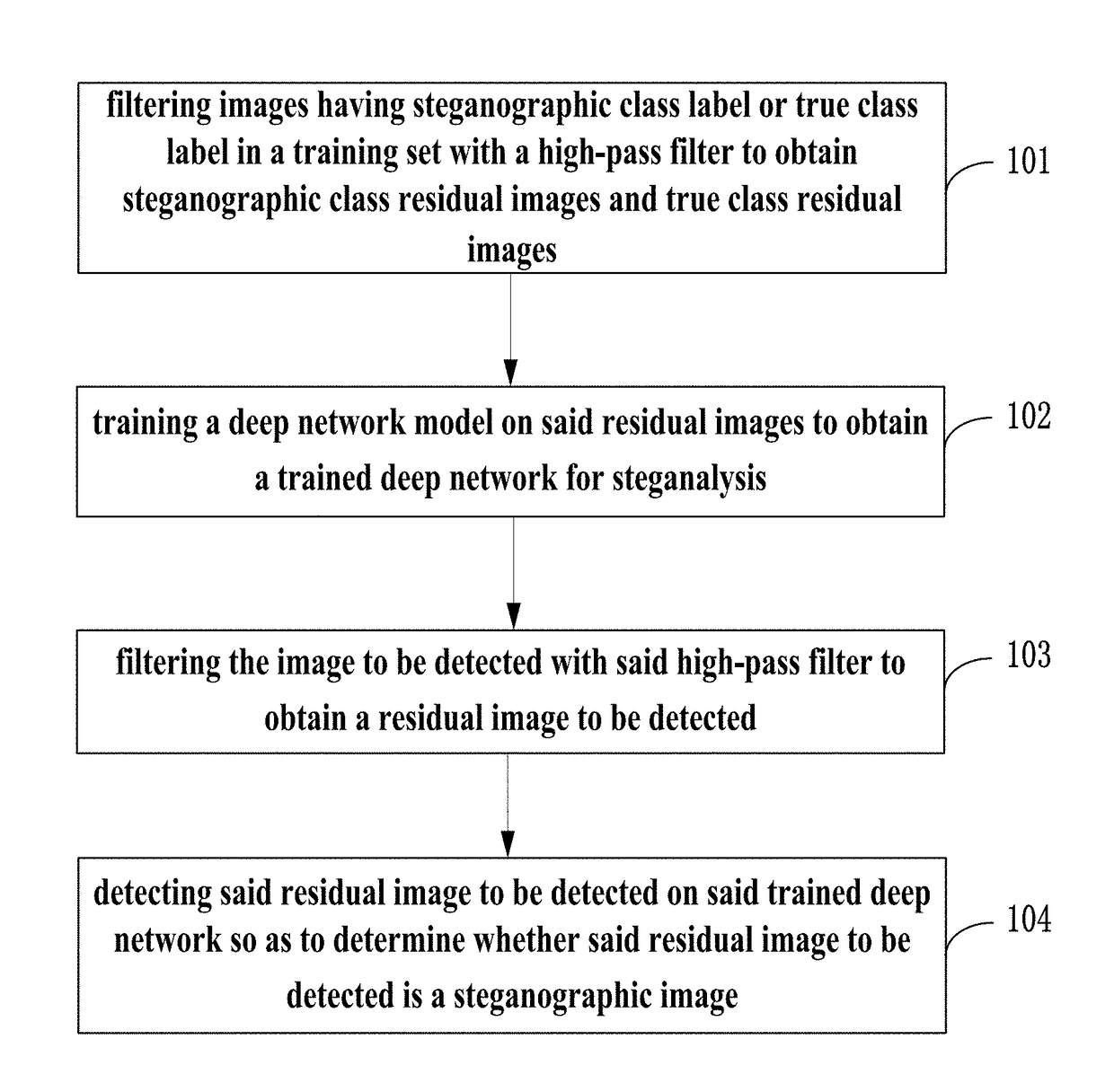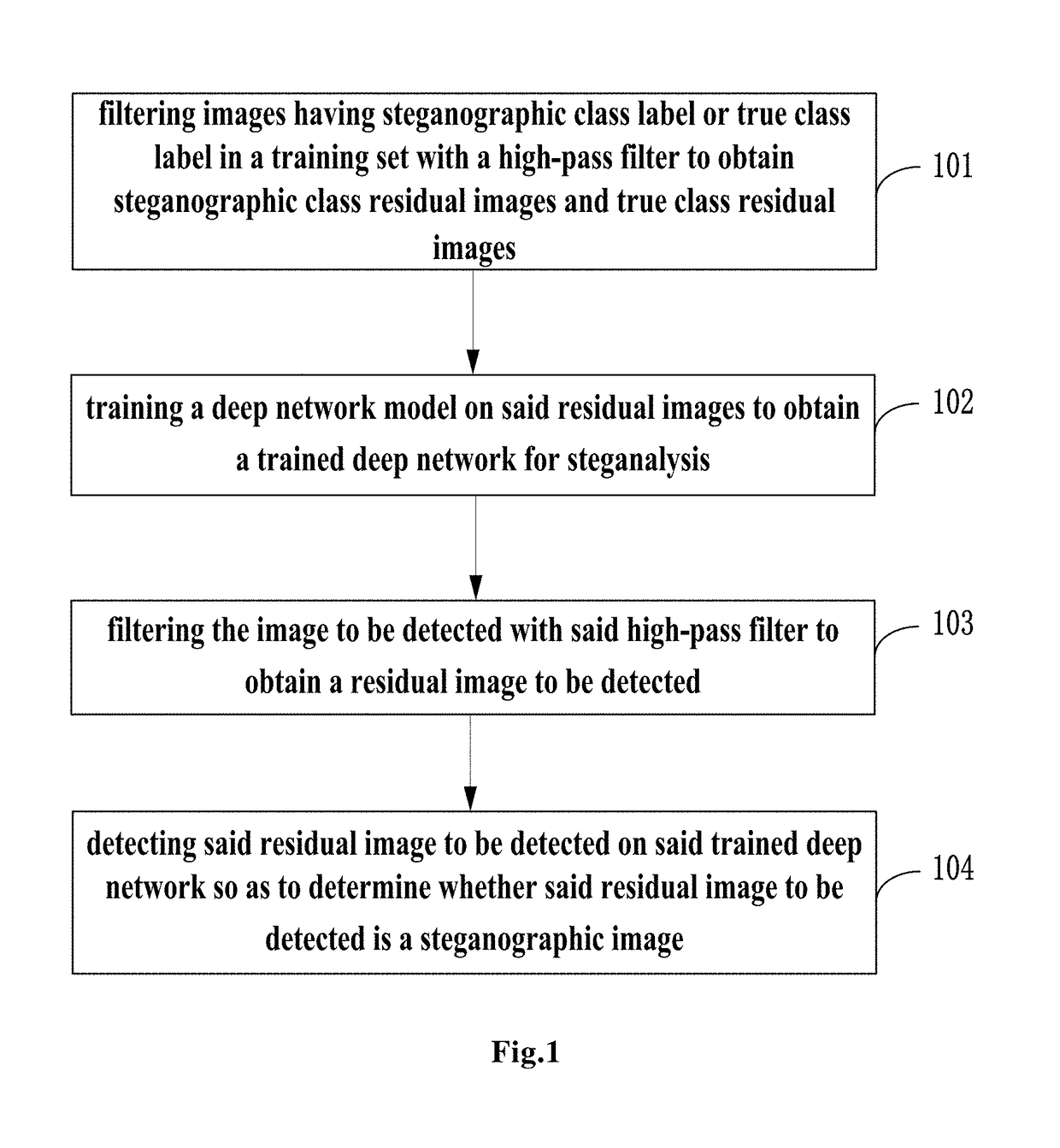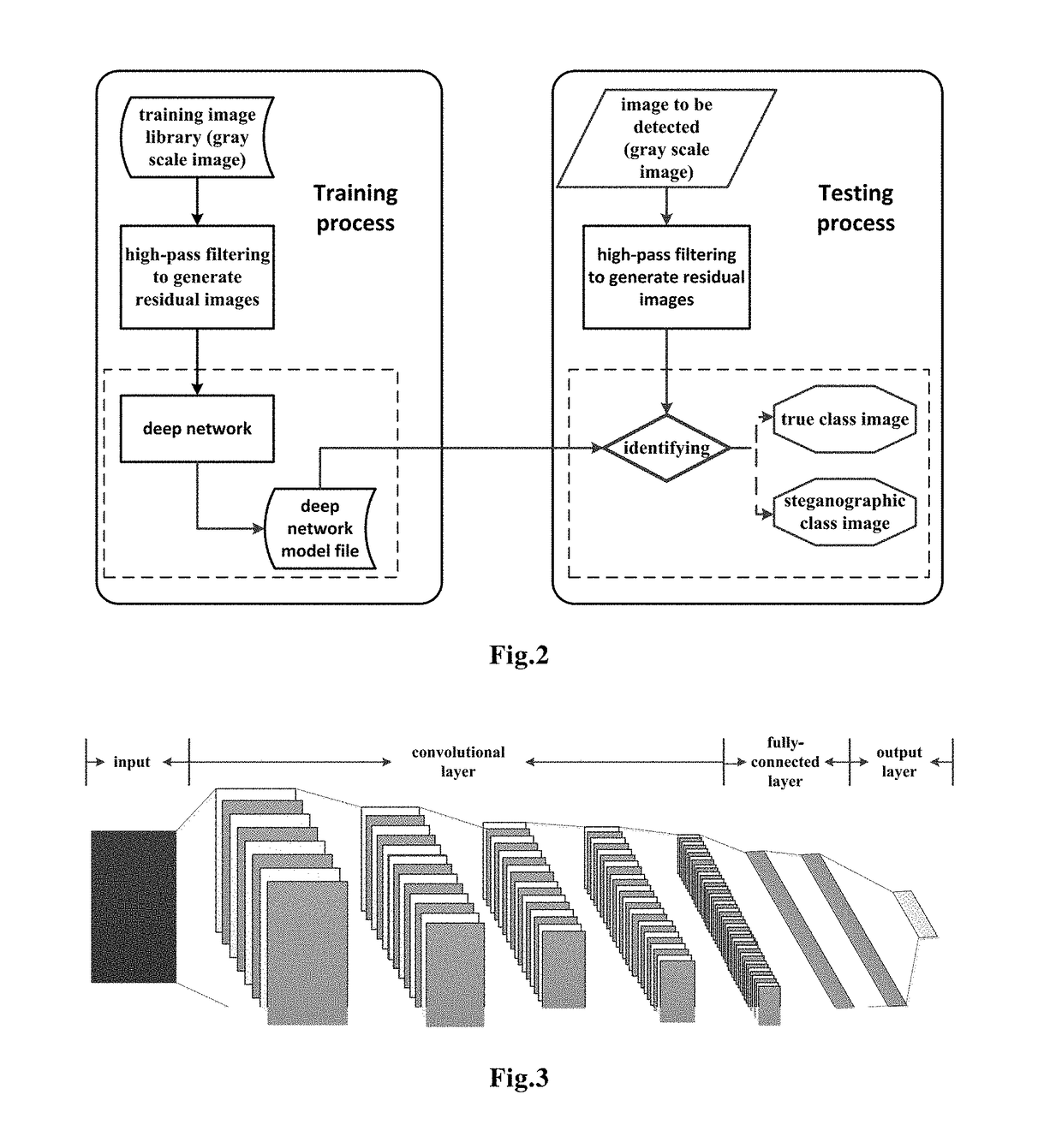Image Steganalysis Based on Deep Learning
a deep learning and image steganalysis technology, applied in the field of image processing, can solve the problems of high detection rate of specialized methods, inapplicability, and potential serious dangers to the country and society, and achieve the effect of high-universal image steganalysis models
- Summary
- Abstract
- Description
- Claims
- Application Information
AI Technical Summary
Benefits of technology
Problems solved by technology
Method used
Image
Examples
Embodiment Construction
[0014]FIG. 1 is a flow chart of embodiment 1 of the method for detecting image steganography based on deep learning according to the present invention, FIG. 2 is a flow block diagram of embodiment 1 of the method for detecting image steganography based on deep learning according to the present invention, FIG. 3 is a structural diagram of a deep convolutional neural network in embodiment 1 of the method for detecting image steganography based on deep learning according to the present invention. As shown in FIGS. 1, 2 and 3, the method for detecting image steganography based on deep learning according to the present invention comprises:
[0015]S101: filtering steganographic class images and true class images in a training set with a high-pass filter to obtain steganographic class residual images and true class residual images. Preferably, said images are gray scale images with a size of 256×256.
[0016]Preferably, said filtering with a high-pass filter comprises convolving image I with a ...
PUM
 Login to View More
Login to View More Abstract
Description
Claims
Application Information
 Login to View More
Login to View More - R&D
- Intellectual Property
- Life Sciences
- Materials
- Tech Scout
- Unparalleled Data Quality
- Higher Quality Content
- 60% Fewer Hallucinations
Browse by: Latest US Patents, China's latest patents, Technical Efficacy Thesaurus, Application Domain, Technology Topic, Popular Technical Reports.
© 2025 PatSnap. All rights reserved.Legal|Privacy policy|Modern Slavery Act Transparency Statement|Sitemap|About US| Contact US: help@patsnap.com



